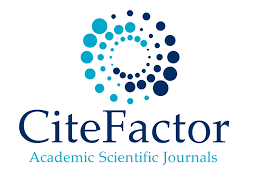Intraocular Pressure Changes Before and After (Within 1st Week and 1st Month) Cataract Surgery in Patients with and without Glaucoma in Benghazi Teaching Eye Hospital
Abstract
Keywords
Full Text:
PDFReferences
Solano, M. M., & Lin, S. C. (2018). Cataract, phacoemulsification and intraocular pressure: is the anterior segment anatomy the missing piece of the puzzle?. Progress in retinal and eye research, 64, 77-83..
Perez, C. I., Chansangpetch, S., Nguyen, A., Feinstein, M., Mora, M., Badr, M., et al. (2019). How to predict intraocular pressure reduction after cataract surgery? A prospective study. Current eye research, 44(6), 623-631..
Leal, I., Chu, C. J., Yang, Y. Y., Manasses, D. M., Sebastian, R. T., & Sparrow, J. M. (2020). Intraocular pressure reduction after real-world cataract surgery. Journal of glaucoma, 29(8), 689-693..
Mansberger, S., Gordon, M., Jampel, H., Bhorade, A., Brandt, J. D., Wilson, B., et al. (2012). Reduction in intraocular pressure after cataract extraction: the Ocular Hypertension Treatment Study. Ophthalmology, 119(9), 1826-1831..
Zetterström, C., Behndig, A., Kugelberg, M., Montan, P., & Lundström, M. (2015). Changes in intraocular pressure after cataract surgery: analysis of the Swedish National Cataract Register Data. Journal of Cataract & Refractive Surgery, 41(8), 1725-1729.
Charoenchitrwattana, U. (2018). The Effect of Phacoemulsification on Intraocular Pressure in Glaucoma with Cataract Patient, occurring in One of the Hospitals under Medical Service Department, Bangkok Metropolitan Administration. Vajira Medical Journal: Journal of Urban Medicine, 62(5), 357-364.
Fukuoka, H., & Afshari, N. A. (2017). The impact of age-related cataract on measures of frailty in an aging global population. Current opinion in ophthalmology, 28(1), 93-97.
Zeid, M. M., Abdel, T. H., Helaly, H. H., & Said, A. (2022). Study of the Intraocular Pressure Changes after Phacoemulsification in Patients with Refractive Errors.
Baek, S. U., Kwon, S., Park, I. W., & Suh, W. (2019). Effect of phacoemulsification on intraocular pressure in healthy subjects and glaucoma patients. Journal of Korean Medical Science, 34(6).
Poley, B. J., Lindstrom, R. L., Samuelson, T. W., & Schulze Jr, R. (2009). Intraocular pressure reduction after phacoemulsification with intraocular lens implantation in glaucomatous and nonglaucomatous eyes: evaluation of a causal relationship between the natural lens and open-angle glaucoma. Journal of Cataract & Refractive Surgery, 35(11), 1946-1955.
Irak‐Dersu, I., Nilson, C., Zabriskie, N., Durcan, J., Spencer, H. J., & Crandall, A. (2010). Intraocular pressure change after temporal clear corneal phacoemulsification in normal eyes. Acta Ophthalmologica, 88(1), 131-134.
Armstrong, J. J., Wasiuta, T., Kiatos, E., Malvankar-Mehta, M., & Hutnik, C. M. (2017). The effects of phacoemulsification on intraocular pressure and topical medication use in patients with glaucoma: a systematic review and meta-analysis of 3-year data. Journal of Glaucoma, 26(6), 511-522.
Chen, P. P., Lin, S. C., Junk, A. K., Radhakrishnan, S., Singh, K., & Chen, T. C. (2015). The effect of phacoemulsification on intraocular pressure in glaucoma patients: a report by the American Academy of Ophthalmology. Ophthalmology, 122(7), 1294-1307.
Iancu, R., & Corbu, C. (2014). Intraocular pressure after phacoemulsification in patients with uncontrolled primary open angle glaucoma. Journal of Medicine and Life, 7(1), 11.
Abd El-All, A. E. R., Mohamed Youseef, A., & El-Sheikh, A. E. S. A. (2022). changes in intraocular pressure and anterior chamber depth after phacoemulsification in non-glaucomatous patients. Al-Azhar Medical Journal, 51(1), 245-254.
Zamani M, Feghhi M and Azarkish A. (2013). Early Changes in Intraocular Pressure Following Phacoemulsification. J Ophthalmic Vis Res., 8(1): 25–3.
Perez, C. I., Chansangpetch, S., Nguyen, A., Feinstein, M., Mora, M., Badr, M., et al. (2019). How to predict intraocular pressure reduction after cataract surgery? A prospective study. Current eye research, 44(6), 623-631.
Huang G, Gonzalez E, Peng PH, Lee R, Leeungurasatien T, He M, et al. (2011). Anterior chamber depth, iridocorneal angle width, and intraocular pressure changes after phacoemulsification: narrow vs open iridocorneal angles. Arch Ophthalmol.;129(10):1283-1290.
Wang, N., Chintala, S. K., Fini, M. E., & Schuman, J. S. (2003). Ultrasound activates the TM ELAM-1/IL-1/NF-κB response: a potential mechanism for intraocular pressure reduction after phacoemulsification. Investigative ophthalmology & visual science, 44(5), 1977-1981.
Sengupta S, Venkatesh R, Krishnamurthy P, Nath M, Mashruwala A, Ramulu PY, et al. (2016) Intraocular Pressure Reduction after Phacoemulsification versus Manual Small-Incision Cataract Surgery: A Randomized Controlled Trial. Ophthalmology.;123(8):1695 -1703.
Zhao Z, Zhu X, He W, Jiang C, Lu Y (2016): Schlemm's Canal Expansion After Uncomplicated Phacoemulsification Surgery: An Optical Coherence Tomography Study. Invest Ophthalmol Vis Sci.;57(15):6507-6512.
Doganay, S., Bozgul Firat, P., Emre, S., & Yologlu, S. (2010). Evaluation of anterior segment parameter changes using the Pentacam after uneventful phacoemulsification. Acta Ophthalmologica, 88(5), 601-606.
Issa, S. A., Pacheco, J., Mahmood, U., Nolan, J., & Beatty, S. (2005). A novel index for predicting intraocular pressure reduction following cataract surgery. British journal of ophthalmology, 89(5), 543-546.
DOI: http://dx.doi.org/10.52155/ijpsat.v45.1.6301
Refbacks
- There are currently no refbacks.
Copyright (c) 2024 Mohammed Embaig

This work is licensed under a Creative Commons Attribution 4.0 International License.



















